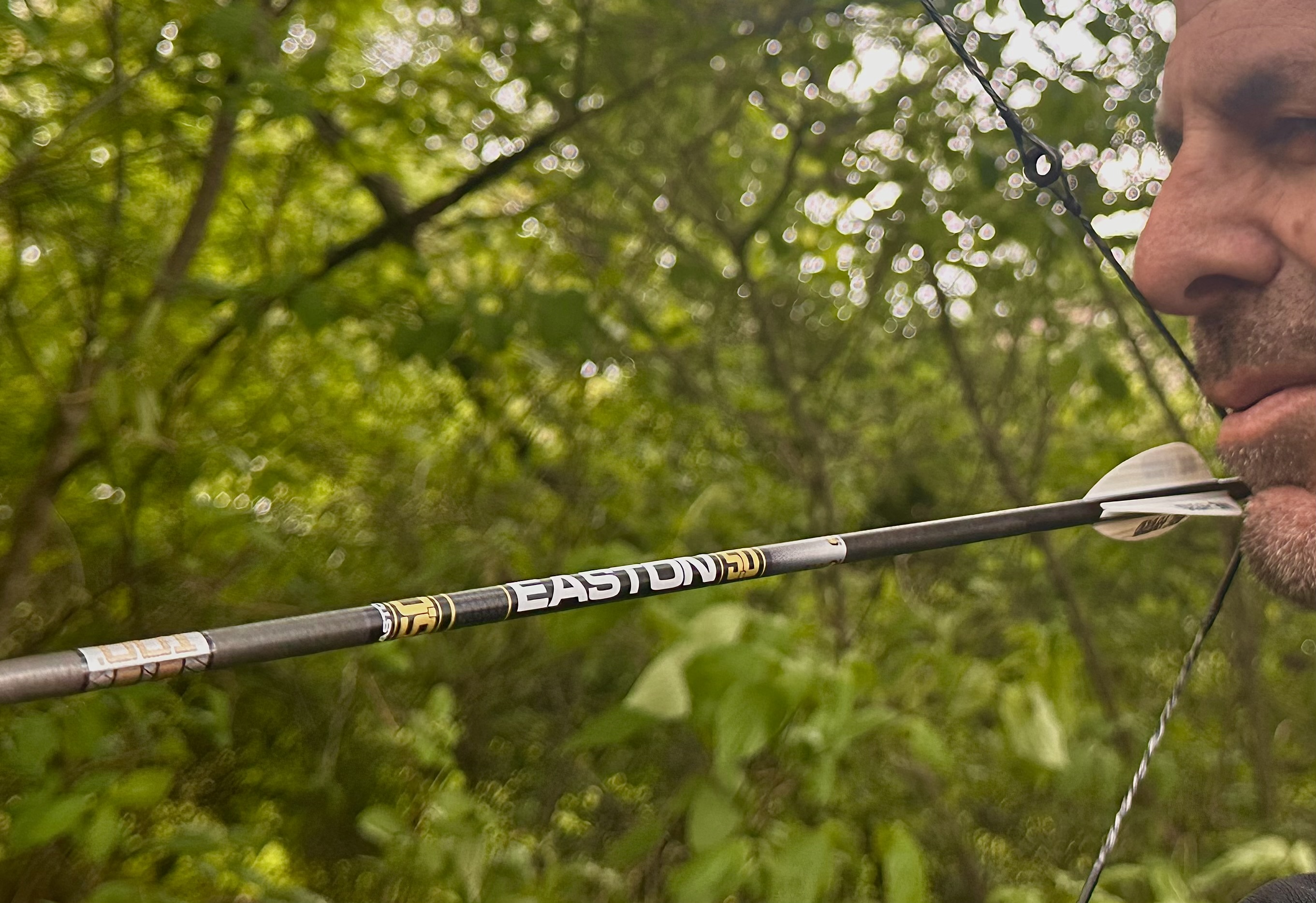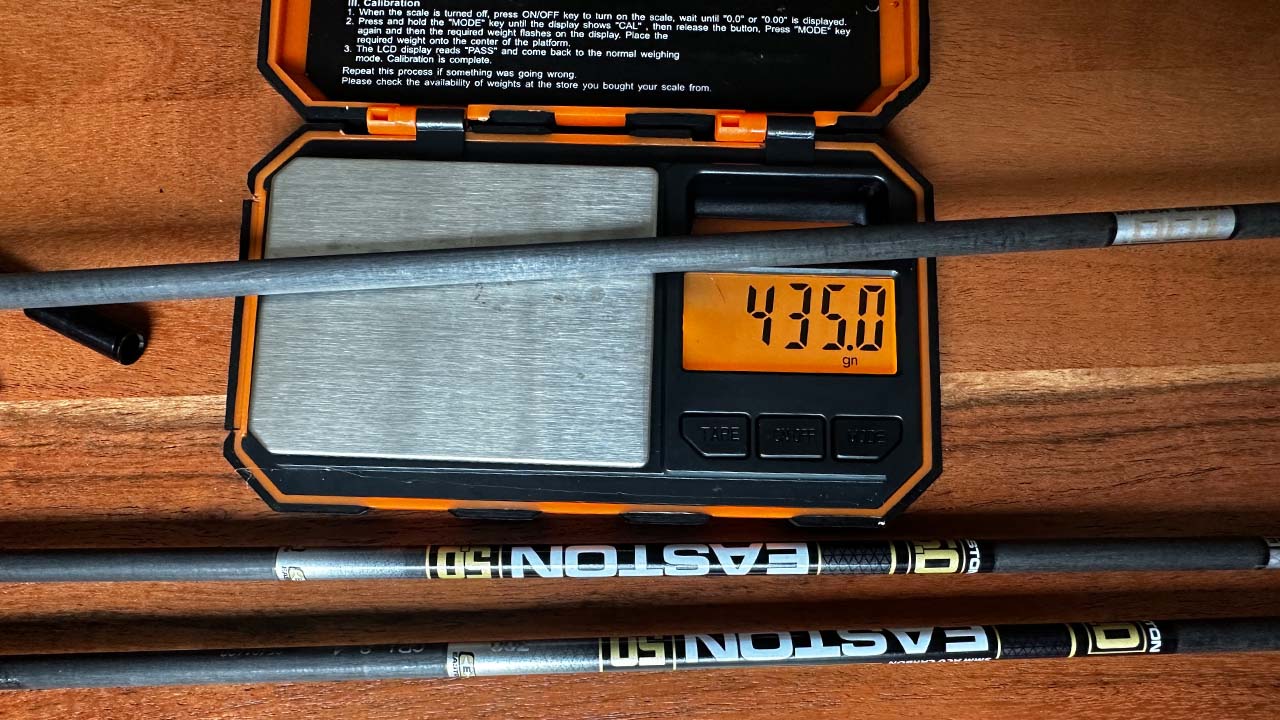The Heavy Arrow Trend Is Dead. Speed Is Back
We may earn revenue from the products available on this page and participate in affiliate programs. Learn More ›
Bowhunting trends often swing like a pendulum. What’s hot one day is cold the next, and gear trends can return as quickly as they disappear.
Currently, the trend in arrow building is swinging away from super heavy arrows with a high front of center balance to lighter builds that allow archers to choose between flat shooting rockets or arrows with boosted FOC that aren’t bogged down by cement shoes.
Arrow manufacturers have noticed this pendulum swing and are pumping out lighter arrow shafts. With those arrows, they’re offering premium components for beefing up FOC. What’s the end game? Appeasing the speed freaks and the FOC conscious with the same arrow shaft.
Topics Covered
- Why Go Lighter?
- The Current Trend: Light Arrows with Good FOC
- Building the Ultimate Arrow
- What the Pros Say
Why Go Lighter?

The arrow weight debate usually pits light, fast arrows up against the 650+ grain scapula penetrators.
Arguably, most bowhunters fall in between these two groups. They don’t want superlight arrows, which can get pushed around by wind and might not penetrate an animal too well. But they also don’t want to add a ton of weight up front, which inevitably slows the arrow down and weakens the spine, possibly to the point of causing accuracy problems.
OL’s editor in chief tested the difference in drop between a 452 grain arrow and a 590 grain arrow with his 67-pound Bowtech Core SR at a 29.5-inch draw length. The lighter arrow dropped 2.25 inches between 30 and 35 yards and the heavier arrow dropped 4.5 inches. A 2.25 inch drop means instead of center punching lungs, you hit the heart. But, 4.5 inches is the difference between a double lung and a marginal hit.
Another reason people are going lighter is the rise in popularity of shooting events like Total Archery Challenge, which challenge archers to shoot long distances. It’s difficult to get a sight to dial to 70 to 100 yards with a heavy arrow.
So wether you’re shooting foam or whitetails, a lighter arrow has advantages for compound shooters.
Read more about the pros and cons of heavy arrows in this article.
The Current Trend: Light Shafts with Good FOC

At Lancaster Archery Supply, which sells just about every arrow made by the most prominent manufacturers, there are some telling trends in sales among the top-selling arrow brands. Among Easton arrows, the new 5.0 is top of the heap. For Victory, the Rip TKO leads the way, although the new HLR is gaining traction. And for Gold Tip, after the bargain-priced Warriors, the Airstrike is among the brand’s top sellers.
Among all these arrows in a 300 spine, the Rip TKO is the heaviest at 8.8 gpi, which is likely one reason the new HLR, at 8.1 gpi, is catching fire. The Easton 5.0 weighs 8.4 gpi, and the Airstrike weighs 8.5 gpi. Less popular are arrows made by these companies that weigh over 9 gpi, many of which once were among the best sellers.
The lighter arrows offer a huge concession to bowhunters that heavier arrows can’t. Shoot them as light as possible, or add weight if you want, and put that weight where you want it.
Read Next: The Best Hunting Arrows
Building the Ultimate Arrow

If you want to keep your Easton 5.0s ultralight, use the standard, 16-grain HIT insert and add a 100-grain point. With average-weight fletchings and a nock, you’re looking at a 29-inch arrow weighing 370 to 390 grains. Boost your point weight by just 25 grains, and you can have an arrow at 395 to 415 grains with roughly 15 percent FOC. That’s still a fairly light arrow, with decent FOC.
Now, let’s say you want to beef things up. You can add a 75-grain steel insert plus a 125-grain point to put 200 grains in the point end. If you do that, I’d recommend going up to a 250 or possibly even a 200 spine to avoid the problems associated with having a weak spine. The 250 spine 5.0 weighs 9.5 gpi, and the 200 spine weighs 10.6, which will add roughly 32 or 64 grains in overall arrow weight, respectively. But those arrows still will be lighter than an Axis 5mm, which weighs 11.5 gpi for the 260 spine and 12 gpi for a 200.
Victory and Gold Tip offer similar component systems for their arrows that allow for light or heavy builds from the same arrows, while keeping the heavy arrow builds from going overboard. Victory has its Rip Shok series of inserts, weighing 21 to 75 grains, plus additional weights can be screwed into the back of the inserts to beef up the front-end weight even more.
For the Airstrike, Gold Tip has aluminum inserts that weigh about 25 grains, or stainless inserts that weigh about 75 grains. Actual weights for both vary by spine. Additionally, Gold Tip offers its FACT – Flexible Additional Component Tuning – weights that screw into the back of the insert if you want even more weight up front.
Even Easton’s revamped FMJ – the FMJ Max – has joined the leaner-is-meaner trend. The FMJ – an arrow with a carbon core surrounded by an aluminum shell – has long been a favorite choice for bowhunters looking to boost momentum. It penetrates deep and is hard to break — though they can be permanently bent. These have been popular for large game like moose, grizzly, and a go-to choice for African dangerous game hunters.
The old-school, 5mm FMJ, which is still on the market, in a 300 spine weighs 12 grains per inch. That’s a hammer. A 29-inch bare shaft weighs 348 grains before a single component is added.
The new FMJ Max also is a 5mm arrow with the same construction as the FMJ, but a 300-spine shaft weighs 10.3 gpi. So Easton shaved about 2 gpi from the new version of the FMJ. Across that 29-inch bare shaft, you save about 50 grains.This allows a bowhunter to shoot a lighter FMJ if they want. You still get the penetration and durability benefits of the carbon core and aluminum jacket, but gain a flatter trajectory. Or, you can boost your FOC without adding a ton of weight.
Less Weight, More FOC
Let’s look at the weights and FOC percentages for two identically-built, 29-inch, 300-spine arrows — one is an FMJ, and the other, an FMJ Max. Same vanes, same inserts, same nocks. With a 100-grain point, the FMJ Max weighs 427.7 grains with an FOC of 10.8 percent. With the same point, the FMJ weighs 477 grains with an FOC of 9.6 percent.
If we take the 50 grains saved with the FMJ Max and simply add it to the point by swapping our 100-grain point for a 150-grain point, the overall weight of the FMJ Max goes to 477.7 grains, with an FOC of 14.6 percent. We increased our FOC by 4 percent, but only added .7 grains to the overall weight of the arrow. To get the same FOC with the FMJ, you’d have to switch to a 175-grain point, and your overall arrow weight would balloon to 552 grains.
Aside from a serious loss of arrow speed, adding 75 grains to the front might weaken the spine to the point where the arrow doesn’t fly very well at distance. That could require moving to a stiffer spine, which means adding even more weight to the overall arrow build.
What the Pros Say
Bowhunters with a target archery background, including Tim Gillingham, Chris Bee, and others, have been preaching through social media the benefits of building hunting arrows in the 420-460-grain range. For average bowhunters hunting North American game, pulling 65-70 pounds of draw weight in the 28-30-inch draw length range, they make a strong case.
They’re not hyper focused on FOC or having 600+ grain arrows. They want arrows that are accurate at long distance and still capable of good penetration.
Christopher Perkins is a world champion target archer and bowhunter who chases big game all over North America. His ideal arrow weighs about 420 grains, including a 100-grain broadhead and 50-grain insert. He doesn’t know what his FOC is.
“Never paid much attention to it,” he said.
In 2020 Perkins shot a mountain goat in British Columbia with a 415-grain arrow at 112 yards. Not all bowhunters are capable of that kind of accuracy, but what’s more important is understanding that his arrow, which some might consider to be light, still killed the goat at that extreme range. Perkins was pulling 75 pounds on his Mathews VXR 28, which shot his 415-grain arrow at 310 feet per second.
It wasn’t a crazy heavy arrow. I don’t know what the FOC was, but it likely was about 15 percent considering an arrow with a spine matched for 75 pounds of draw weight and a total overall weight of 415 grains. It was an arrow capable of being shot super accurately at long range.
Think of what that arrow would do to a whitetail at 25 yards. Do you need 600 grains and 25 percent FOC for that deer?
Anything can happen when bowhunting wild game. A heavier arrow with high FOC is certainly preferred if you shoot a big buck square in the shoulder. But hitting what you’re aiming at is always the primary goal.
And that’s why we’re seeing the hunting arrow pendulum swing back away from super heavy, high FOC. Bowhunters are realizing that whether the arrow buries 6 inches into the dirt on the other side of the deer after passing through, or it simply ends up laying on the ground, the arrow did its job inside the deer. And so why not scale back the weight and focus on good arrow flight, a flatter trajectory and solid penetration as a total package?
That’s the trend arrow manufacturers are capitalizing on now. You can too with the lighter offerings that are out there today. Build the arrow you want, the way you want.
The post The Heavy Arrow Trend Is Dead. Speed Is Back appeared first on Outdoor Life.
Source: https://www.outdoorlife.com/opinion/the-heavy-arrow-trend-is-dead-speed-is-back/




